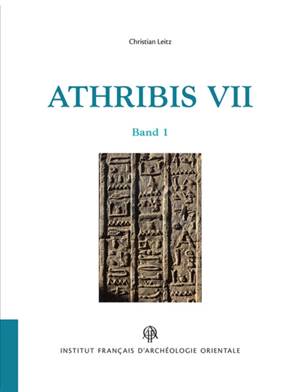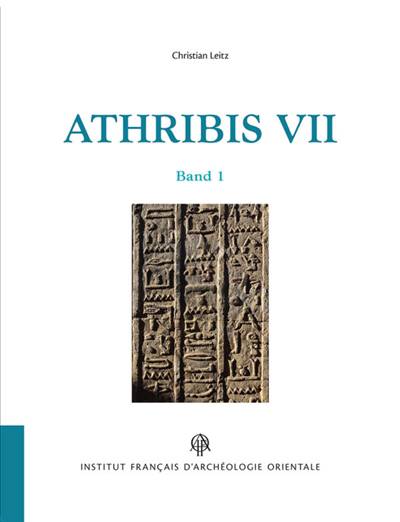
- Retrait gratuit dans votre magasin Club
- 7.000.000 titres dans notre catalogue
- Payer en toute sécurité
- Toujours un magasin près de chez vous
- Retrait gratuit dans votre magasin Club
- 7.000.0000 titres dans notre catalogue
- Payer en toute sécurité
- Toujours un magasin près de chez vous
Description
La première partie, et de loin la plus importante, de cette monographie consiste en une traduction de toutes les inscriptions du grand temple d'Athribis, assortie d'un bref commentaire. Cette partie comporte une introduction sur les différentes catégories de textes.
La deuxième partie consiste en une analyse, en six chapitres, de la théologie du temple. Elle traite d'abord du panthéon du temple, avec à sa tête la déesse lionne Répit et le dieu Mîn, et s'intéresse à la centaine de désignations différentes utilisées pour les salles et le temple. Les chapitres qui suivent présentent des parallèles textuels et la pratique cultuelle. La dernière chapitre regroupe tous les arguments en faveur de l'hypothèse qui fait du temple d'Athribis le plus grand mammisi d'Égypte encore préservé.
The first and by far the largest part of this monograph is a complete translation of all the inscriptions of the great temple of Athribis, together with a short commentary. This part includes an introduction on the different categories of texts.
The second part consists of a six-chapter analysis of the theology of the temple. It first deals with the temple pantheon of Athribis, headed by the lion goddess Repit and the god Min, and focuses on the hundred or so different names used for the room and the temple. The following chapters present textual parallels cult practice. The last chapter brings together all the arguments in favour of the assumption that the temple of Athribis is by far the largest remaining mammisi all over Egypt.
Der erste und bei weitem umfangreichste Teil des Werkes besteht - nach einer Einleitung zu den verschiedenen Textgattungen - aus einer vollständigen Übersetzung aller Inschriften des großen Tempels von Athribis einschließlich eines meist kurzen Kommentars.
Der zweite, auswertende Teil beschäftigt sich in sechs Kapiteln mit der Theologie des Tempels. Er behandelt zunächst das Pantheon von Athribis mit der Löwengöttin Repit und Min an der Spitze und dann die über 100 verschiedenen Raum- und Tempelnamen. Es folgen Kapitel zu den Paralleltexten und zum Kultbetrieb, bevor am Ende die Argumente zusammengetragen werden, die dafür sprechen, daß es sich bei diesem Bauwerk um das größte noch erhaltene Mammisi Ägyptens handelt.
Spécifications
Parties prenantes
- Auteur(s) :
- Editeur:
Contenu
- Nombre de pages :
- 1224
- Langue:
- Français
- Collection :
- Tome:
- n° 7
Caractéristiques
- EAN:
- 9782724708042
- Date de parution :
- 11-01-23
- Format:
- Livre relié
- Format numérique:
- Genaaid
- Dimensions :
- 220 mm x 290 mm
- Poids :
- 4312 g

Les avis
Nous publions uniquement les avis qui respectent les conditions requises. Consultez nos conditions pour les avis.






